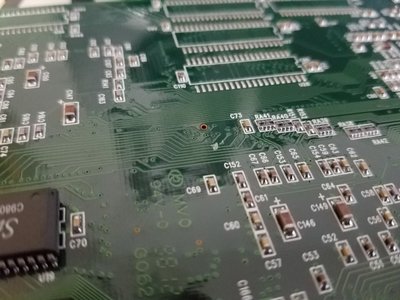First post, by SaxxonPike
- Rank
- Member
Good afternoon.
I've received a Diamond Monster 3D Voodoo 2 card, and didn't catch a gouge in the board from any of the photos. It looks like some traces were intentionally modified. Or an attempt was made, anyway. Pic included. Is it possible to repair this kind of damage?
Sound device guides:
Sound Blaster
Aztech
OPL3-SA
